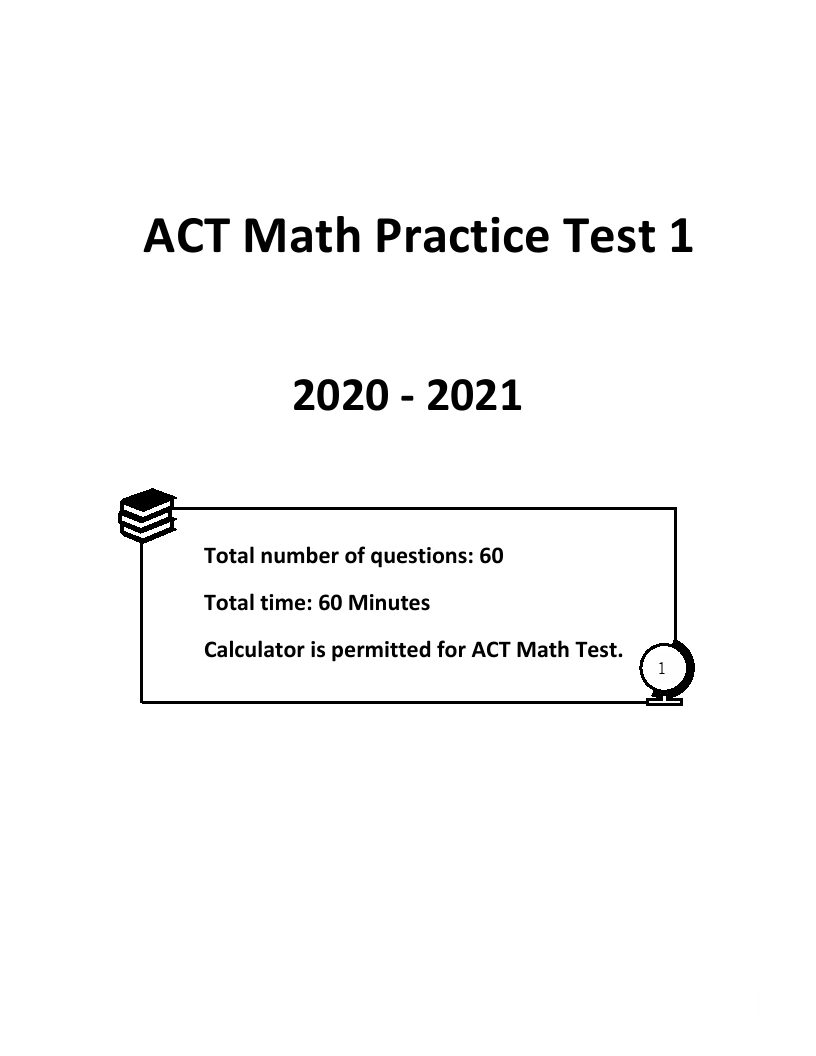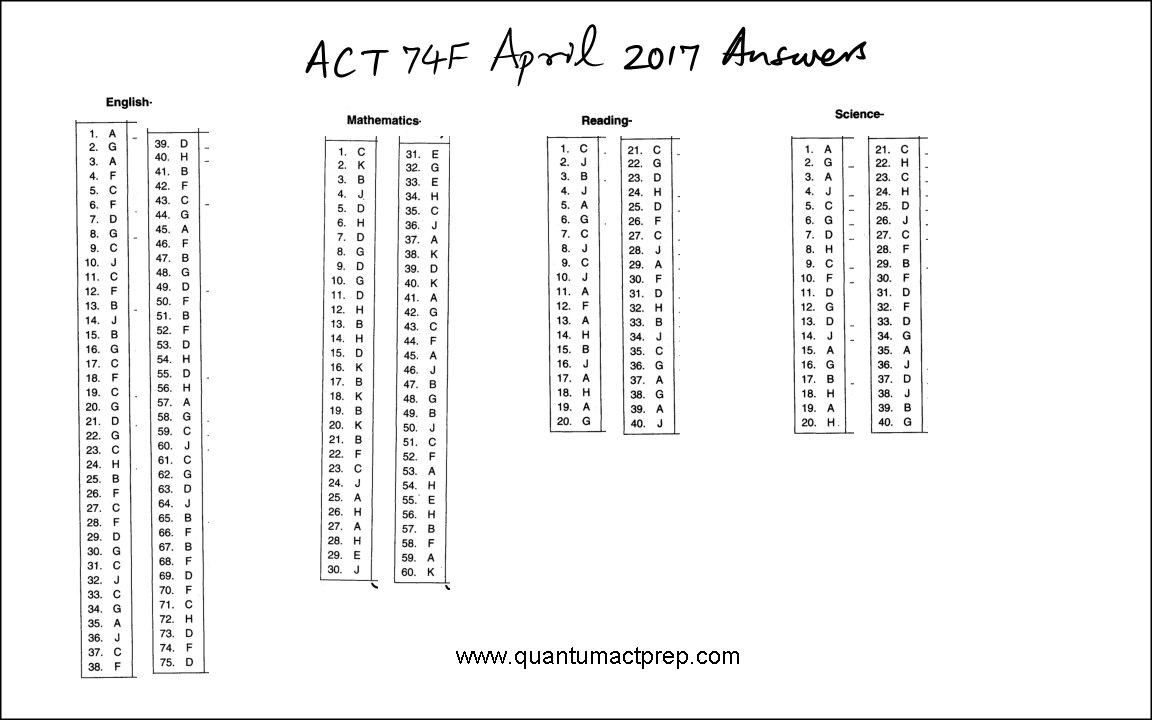

You will also need to bring your paper ticket (for National and International ACT test dates), a permitted calculator, multiple sharpened soft lead No.

What to Bring for Your ACT Math Testįor your ACT Math test you will be required to show approved photo identification. If you incorrectly fill in an oval, you can correct it by completely erasing it, taking care not to leave smudges which may otherwise result in errors when your test is scored. You will be expected to fill in the respective oval on your answer sheet based on the number of the question you are responding to.īe sure to check that the number of the questions you are answering matches the number line of the oval with each question, especially if you skip questions to return to at a later time during the test. You will be expected to have basic knowledge of formulas and computational skills acquired throughout school up to grade twelve for these problems, but more complex or extensive formulas and computation are not expected on this test.įor the test you will be given a bubble answer sheet to record your answers. Link: Official Math Practice Test Description for the ACT => ACT.Prepare with our ACT Study Guide and Practice Questions.

Solve non-routine problems that involve combining skills in chains of steps applying skills in varied contexts understanding connections and demonstrating fluency.

Relationships area, surface area, and volume average and median and expressing numbers in different ways. The questions ask you to address concepts such as rates and percentages proportional This category focuses on measuring how well you can synthesize and apply your understandings and skills to solve more complex problems.Calculate probabilities by recognizing the related sample spaces 2. Understand and model relationships in bivariate data. Apply and analyze data collection methods. Statistics and Probability (8–12%): Describe center and spread of distributions.Geometry (12–15%): Coordinate Geometry questions focus on graphing and the relations between equations and graphs, including points, lines, polynomials, circles, and other curves graphing inequalities slope parallel and perpendicular lines distance midpoints and conics.Manipulate and translate functions, as well as interpret and use important features of graphs. Use functions including linear, radical, piecewise, polynomial, and logarithmic. Functions (12–15%): Demonstrate knowledge of function: definition, notation, representation, and application.Find solutions to systems of equations, even when represented by a simple matrix equation, and apply results to real-world contexts. Interpret and use many different kinds of equations, such as linear, polynomial, radical, and exponential relationships. Algebra (12–15%): Solve, graph, and model multiple types of expressions.Reason with numerical quantities in many forms, including expressions with integer and rational exponents, and vectors and matrices. Number and Quantity (7–10%): Demonstrate knowledge of real and complex number systems.Seeįor details about prohibited models and features for the final ACT Math test. You are permitted to use a calculator on our ACT Math Practice Test, though a calculator is not required. While you will have to know basic formulas and computations for the ACT Math Practice Test, you will not be expected to remember more complex ones-they will be provided for you along with the question. Our ACT Math Practice Test set question is multiple-choice, although, unlike the English test, there are five possible choices for each question. Major content areas that are prerequisites to successful performance in entry-level courses in college mathematics. The material covered on the test emphasizes the Knowledge of basic formulas and computational skills are assumed as background for the problems, but recall of complex formulas and extensive computation is not required. Most questions are discrete, but on occasion some may belong to sets of several questions (e.g., several questions based on the same graph or chart). The test presents multiple-choice questions that require you to use reasoning skills to solve practical problems in mathematics.


 0 kommentar(er)
0 kommentar(er)
